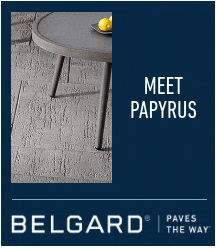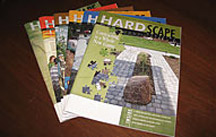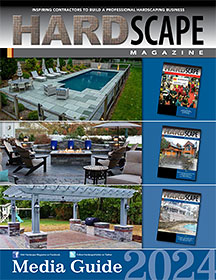Articles written by guest contributors

Jeremy Martin’s pizza oven has a history with his family. It’s become central to his backyard space where memories were made.
Whatcha selling?
By Jeremy Martin
Some of us are natural sales people, others frankly stink at it. Maybe you’re the proverbial person selling ice to Eskimos in the middle of the winter! Or maybe you’re the person who couldn’t sell ice cream in the Sahara in the dry season.If you look at those extremes, one is brashly selling what he knows is completely useless to the buyer. The other can’t communicate to the buyer what they clearly need. Neither has the buyer’s best interest at heart; whether due to greed or fear, neither seller is focused on meeting the buyer’s needs.
I still don’t win every bid after selling for nearly 20 years. But I’ve confidently walked into a proposal review and said, “I’m sorry Mrs. Smith, I know your budget was $50K but I can’t deliver what you want for less than $70K and that doesn’t include a kitchen yet.” That project grew well into the 6 figures by the time we finished with the add-ons.
What gave me confidence to propose plans that were clearly over budget? Because I had listened. I knew how this outdoor space was to be used. How was I so sure that my proposal was what they wanted? Listening isn’t enough, although it’s a very important part of selling. But we should listen after asking the right questions.
Some clients know exactly what they want and will describe it in great detail to you, and all you need to do is listen. Most, though, don’t truly understand what we do. It’s too easy for us to talk about the features of our product and services, and why they are better.
Don’t be a square footer
Worse yet, we sell by the square foot price. Mrs. Smith could – or should! – care very little whether your design has 400 or 450 square feet, and whether you’re selling pavers for $20 or $60 a square foot.Square foot pricing is a lazy method for experienced hardscapers to estimate, but an easy way for a newcomer to price a few projects while figuring out how much time it really does take to build a patio. Like so many others, we started by estimating by the square foot price that we heard was the going rate. It worked out just enough to keep us going through those early years.
We soon began estimating materials accurately, but it would take years to fully understand and track the production rates of various tasks. Square foot pricing is bad for contractors, because few jobs are alike. Base requirements, site access, laying pattern, drive time, weather… are all factors in our efficiency.
In addition, square foot pricing gives clients an easy number to compare your bid to the 5 other contractors they called! And they miss the fact that you’ve included lawn restoration and permits while the other contractor hasn’t. Mrs. Smith just sees that your price is $3 more per square foot.
Clients want a place to make memories
So, square foot pricing is bad for the contractor, but let’s look at the consumer and why it’s equally bad for them. Why? Listen, the Smiths aren’t really buying a paver patio.I can explain all the ways pavers are superior to poured concrete for aesthetics, durability & lifecycle cost. But a simple concrete slab could meet their basic need… a place to make memories!
Reducing their investment to a simple square foot cost ignores the very reason they want a patio. Your job as a salesperson is to find out what memories they want to make, with whom, and how. Again, this comes back to asking the right questions… then listening!

Jeremy Martin
My place to make memories
Now, let me share a personal experience about building memories in my own backyard. I had wanted a pizza oven for years, ever since I researched large wood-fired ovens for a client. Understand, my home looks nothing like my clients’ homes. It’s wooded and everything tends to be more natural and informal.My fire table is sitting in a pea gravel area bordered by pavers; no fancy inlays or expensive epoxy sands here! Right next to that is a rustic playground with just wood chips and the highest swing I could build by myself with just my excavator to lift the beam.
The landscape is casual; at heart I’m a plant collector and it shows. While I sometimes dream of ripping it out and creating something like the landscapes we build for clients, I haven’t the heart to do it.
I’m also a lighting nut, and my backyard is LIT in every sense of the word. Uplighting. Downlighting. Moonlighting. Area lights. Pendants. And when the sun goes down, my backyard turns into something magical and guests are captivated.
Conversations stretch long into the night when sitting around the fire, while children are playing spikeball or toasting s’mores, cheese cubes, or hot dogs. We’ve created a place that is perfect for memories!
Back to the pizza oven. A family member bought a new home and said, “There’s this oven in the backyard… do you want it? I’ll never use it.” Well, yes, I was definitely interested! We cooked in it a couple times at their home, then this past summer it landed in our backyard.
The island still needs some tweaking, as I’m not quite satisfied with the design. But we’re making a whole new set of memories, and we love it! My wife rolls out the dough right at the oven, everyone builds their own custom pizza, and I’m in charge of cooking the pizzas.
If you read this column regularly, you may remember that I wrote about work/life balance in December. Case study #3 was my wife’s youngest brother. He lost his battle with cancer around the time that issue was published. And it is his pizza oven that now resides in my backyard. We’ll always treasure the 1 time he was able to come over for a pizza party. That was a wonderful time, and my only regret is that we don’t have more pictures of that night.
What we build every day (whether it’s landscaping or outdoor living areas) needs to satisfy 2 goals. First, it should beautify the property and increase the value. Second, it needs to provide the client a warm, inviting space to make their memories. If your proposal can’t do both, then it has failed.
For me, the greatest compliment a client can give after a design presentation is to have them say, “Clearly you heard us!” Nothing is more rewarding than a client giving a testimonial video describing how they’ve been using their new space every day!
Now… go make some memories!
Jeremy Martin co-founded Willow Gates Landscaping in 2005. He became an ICPI instructor in 2016, NCMA in 2018. He also founded Dust Killer Tools to help his company meet 2017 OSHA silica standards. Email Jeremy@DustKiller.tools. Visit WillowGatesLandscaping.com and DustKiller.tools















